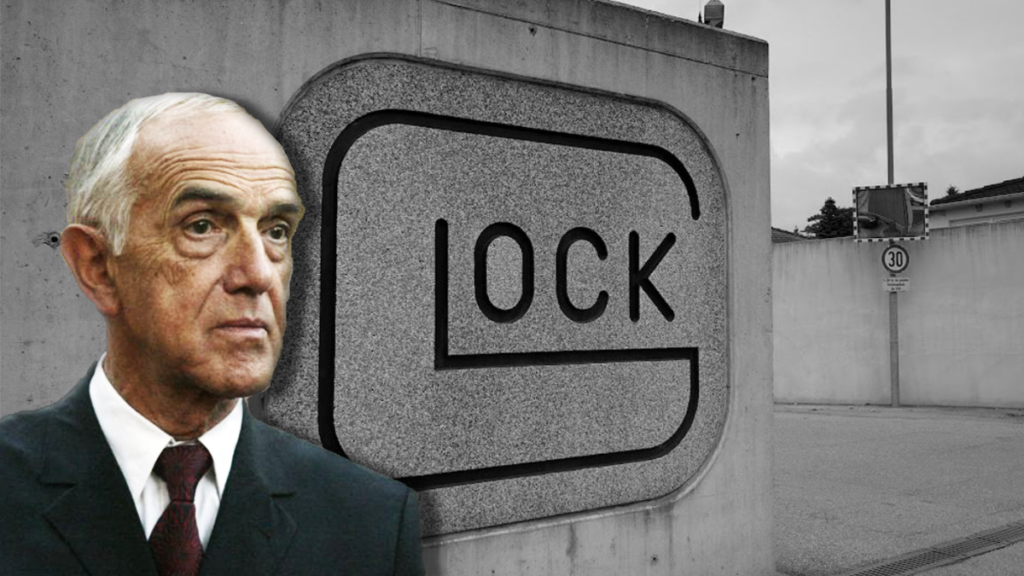Gaston Glock, the brilliant Austrian inventor, entrepreneur, and founder of one of the most successful firearms manufacturers in history, passed away Wednesday at 94. The cause of death was not immediatly announced.
In 1963, as Europe was attempting to rebuild every aspect of its economy after the devastation of World War II, Glock founded Glock Ges.m.b.H to provide molding parts and components for several European authorities and companies from his facility in Deutsch-Wagram, Austria.
His polymer molding products formed the handles of knives and shovels, curtain rods, doorknobs, grenade casings, machine belt links, and machine covers for newer wiring and tubing in the burgeoning age of postwar communications.
In 1976, Glock noticed a contract opportunity published by the Austrian army for a new knife bayonet for its Steyr AUG assault rifle. Glock meticulously designed a knife of plastic polymer and steel from hilt to blade that, while simple in its design and production, was crafted to perfectly augment the AUG. Austria awarded Glock the contract, and with an order of 25,000 knives, the engineer now had his foot in the door.
By the turn of the 1980s, Glock was manufacturing knives, entrenching shovels, and other pointy objects for Austria’s police forces and army.
Knives weren’t the only thing due for an upgrade in Austria’s military, however. The Walther P38 was outdated, and 1980 boasted far better 9mm service pistols from a host of designers around the world. The Steyr GB, designed in 1968 and from a manufacturer already working with the Austrian military, was favored to win the new contract posting.
The Austrian Ministry of Defense’s specifications were exacting. The pistol was required to be self-loading, to fire the NATO 9x19mm cartridge, be ambidextrous, have a capacity of at least eight rounds, and be made of 58-or-fewer interchangeable parts that could be replaced without special tools.
Unlike the SIG Sauer, Beretta and Steyr, whose pistol designs might have been hindered by, as historian Stuart Brown put it, “preconception or existing tooling,” Glock built his design from scratch. The resulting pistol was christened the Glock 17, as his 17th invention. As Brown noted, “That the magazine capacity was 17 rounds was serendipity.”
Glock’s pistol stole the show, easily outclassing SIG Sauer’s, Beretta’s and Heckler & Koch’s submissions. He was awarded the contract for 25,000 pistols and the Glock name was launched into both fame and infamy.
American media discredited themselves over the Glock at first, claiming that it was an “undetectable plastic gun,” which was “tailor-made for terrorism,” due to a wild allegation that the Glock was invisible to metal detectors. That, of course, was silly. The Glock 17 is 83% metal, and every common pistol cartridge is built of both a metal bullet and metal casing.
The movie “Die Hard 2” starring Bruce Willis famously goofed on its description of Gaston Glock’s creation. Willis’ John McClane character’s line will live on in the jokes of gun owners forever:
Luggage? That punk pulled a Glock 7 on me. You know what that is? It’s a porcelain gun made in Germany. It doesn’t show up on your airport X-ray machines here, and it costs more than what you make in a month!
Regardless of the initial coverage, Glock’s vision for firearms manufacturing changed the production and sale of firearms forever. The company has production facilities in Austria and Slovakia, as well as in Smyrna, Georgia. Annual sales regularly top $500 million globally, and in 2021, Forbes reported that Glock held an estimated “65% market share of handguns in the U.S.”
That’s due to four key factors: ease of production, durability, price, and versatility. Every one of Glock’s more than 50 pistol designs is made in the same fashion as the Glock 17. Each can be taken apart, serviced, and put back together again with ease (if you know what you’re doing). They can take a fair amount of wear and tear that many other manufacturers struggle to achieve.
Usually, quality and reliability that high result in an equally high price tag—but not so with Glocks. While many high-quality handguns run more than $1,000 (and many, two or three times that, depending on owner preference), Glocks tend to hang around the $400 to $700 price range—much more affordable for individuals who want a solid concealed-carry or home-defense weapon.
It’s for that reason, in my opinion, that Glock has done more for personal defense than any man since Samuel Colt. After all, Colt’s handguns earned the nickname “the Great Equalizer” for a reason. With its ease of procurement and use, it was said, “Abe Lincoln may have freed all men, but Sam Colt made them equal.”
Glock’s manufacturing and distribution of simple, reliable and inexpensive firearms have allowed millions to protect themselves and others. His brilliance in industry and ingenuity should be revered and taught.
Rest in peace, Gaston Glock.
Have an opinion about this article? To sound off, please email letters@DailySignal.com, and we’ll consider publishing your edited remarks in our regular “We Hear You” feature. Remember to include the URL or headline of the article plus your name and town and/or state.
